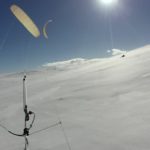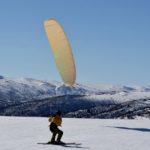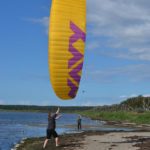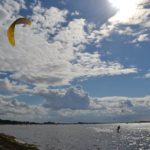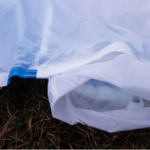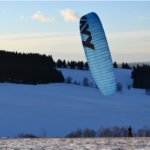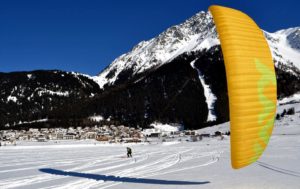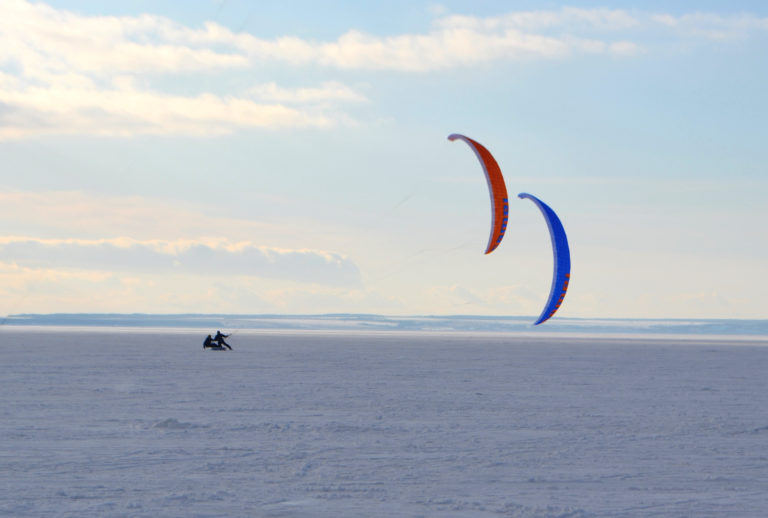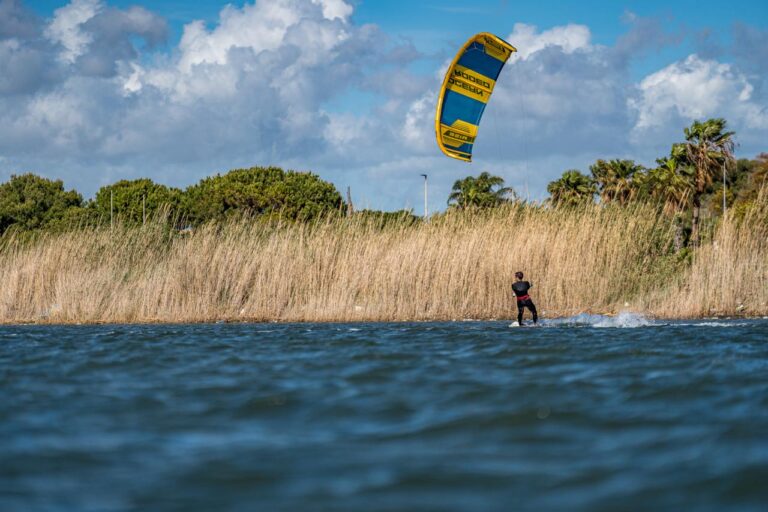It will soon be a year since I decided to enter the world of closed chamber kits, where most of you will probably think I did it so I could start riding water, but that is not the case. So far, I’ve still stayed true to grass land skis, but most importantly to the (increasingly unavailable here) snow! I have read many discussions on internet forums about whether a closed chamber for off-water riding makes sense, so I decided to add my reasons for switching from the Aeros Alti 12.5qm to the Aeros Navy 2 11qm.
Basic characteristics
Leaving aside the fact that a closed chamber allows you to ride on the water, let’s look at why closed chambers are actually made from a slightly different – more technical – perspective. I’m sure you’ve noticed with closed chamber kits that they tend to be slimmer in design. This difference is most noticeable in race kits in particular. This is the so-called “aspect ratio”, or aspect ratio. The Navy 2 has an aspect ratio of 6.05, which puts it somewhere halfway between a classic open chamber and a race kit.
The rule of thumb here is that the higher the aspect ratio, the more power the kite has for the same area, also better hang-time, but also wider depower. However, what the kite loses with this slimming down is the stability of the wing and this is one of the reasons why these kite are made with closed chamber technology – to compensate for this lack. So when I compare my current Navy 2 11qm with the Alti 12.5qm, I feel the Navy is 1.5qm more powerful despite the fact that its surface area is 1.5qm smaller, and that has its advantages! Just imagine you have a kite that performs like a 14qm in low-wind, in stronger winds you can hold it as if it were a 12.5qm thanks to the very wide depower, and when you want to do a kite-loop with it, for example, it turns fast as if it were a 9qm. These are some of the advantages of this closed chamber, but it doesn’t stop there.
Inhale and exhale
In order for a closed chamber to develop all its properties, it must first be inflated. How complicated is this and how long does it take? In winds of 2-3m/s after placing the kit directly overhead and with the bar pulled in, no longer than 10-15s. It helps if one waves the kit a few times and is good to go. Sometimes I’ll even start with a not-fully-inflated kit, because it’ll inflate during the ride anyway, so why wait? ![]()
Do I need to pre-blow the chamber before starting? Not at all with Navy 2. I’ve never done that and the kite has always inflated beautifully and quickly on its own with no problem. Once I even managed to inflate it this way in a complete windless day, when it occasionally blew 1.5m/s at times. It took me about 10 minutes, but I never took the skis off my feet and that’s what counts! ![]() (by the way, I consider this to be a really extreme case of an attempt to start with a non-inflated closed chamber)
(by the way, I consider this to be a really extreme case of an attempt to start with a non-inflated closed chamber)
However, once the kite is inflated, it is capable of flying at 0.5m/s, making it the perfect low-wind companion. With my weight of 66kg, I have observed the following in terms of wind range:
- from 1.5m/s – I am able to launch and inflate the kite
- 0.5-1m/s – I’m coasting
- 2m/s – I’m poisoning
- 3m/s – I’ll have a good ride
- 3.5m/s and more – I am able to jump
- up to 10m/s – I can still hold the kite without being blown away (without using trim)
Speaking of trim, the Navy 2 has it geared with two pulleys, so you don’t have to be very strong to trim the kite while riding right in the power zone. The trim rope is made in the style that race kits normally have today – long with several knots. As for the trim on this kit, I’ve heard stories of an approx 72kg rider at the Red Bull Ragnarok holding it at up to 20m/s (kite on edge, bar all the way apart, trim at max). Therefore, you could say that the wind range of this kit is extreme, but if perhaps you weigh like me, I wouldn’t recommend taking it to more than 10m/s and keep the trim for emergencies only.
Safety NAVY 2 11qm
As far as safety is concerned, I finally understand why closed chambers are not recommended for beginners. The main factor here is the fact that a closed chamber keeps its shape all the time and unlike an open chamber, it doesn’t collapse when the brake handle is pulled, it just starts backing up/landing to the ground. Hence, I would not allow the Navy 2 in 11qm size to land like that in the power zone from 5 m/s wind speed, as the kite retains a lot of its power even when the brake handle is pulled, and there is a lot of power :-). If you don’t have a partner on hand to catch the kite on the edge of the window, you can either try to land the kite on the edge of the window by yourself, or you can choose to be safe and shoot the kite completely. In the low-wind it is already easier to land with this kit.
Stability and handling
Another one of the main reasons why I chose Navy 2 is the overall stability of the kit. Now by that I don’t mean that one doesn’t have to babysit it, quite the opposite, but rather that if it does go down, there is a very high probability that it will be able to recover and take off again. The problem with open chambers with a larger area (maybe 10qm or more) is that if I land with them, the wind will turn and fold 1/3 of one wing of the kit inwards, quite often this can mean that I won’t be able to take off with the kit. However, due to the fact that the closed chamber holds its shape after landing, this situation happens very rarely.
As I already mentioned, I would recommend the Navy 2 to intermediate to advanced riders, as the kite needs to be constantly monitored so it doesn’t wreck as often. As a reward for this effort, you’ll make rapid progress in your piloting skills, where the next time you hook an open chamber behind your trapeze, you’ll be able to keep it in the air like a gentleman even while riding.
Coming back to the stability issue, my main goal during every ride is to not have to take my skis off and go fix the kite to start again, if possible. According to this criterion, I have my own personal stability measure of the kit, where you can compare how you are doing with your equipment. If the number of times you have to take your skis off in an entire single ride is as follows, your kite:
- 0-1x – very stable
- 2-3x – moderately stable
- 4 times – rather unstable, or you need to work on your piloting skills

. . . . where with Navy 2, I’m managing to stay in the top category.
I would like to conclude the whole subchapter of safety and the ideal of what kits to choose for your equipment (because de facto you can’t get by with one) with my personal opinion that the ideal is to have 2 kits. one large enclosed low-wind chamber and one one small open one small chamber (it’s safer) for stronger winds.
For all weather
If a closed chamber is suitable for water, it must be suitable for almost any weather. Since we have had snow in recent years, sometimes there is no time to wait for it to fall, but you have to go when it falls :-)). When I started riding, I had about 2 cm of snow under my feet. When I finished after about an hour and a half, there were about 5 cm. Normally I would have expected the kite to be wet as a hawk, but all I found on it at home were a few drops of melted snowflakes.
In addition, the Navy 2 has openings on the sides of both wings for the automatic drainage of water and dirt that could possibly get into its chambers. When I want to dry a kite, there’s nothing better than going for a spin.
Conclusion
Closed chambers are noticeably more expensive than open chambers, but life is all about experiences. Speaking for myself, if I can ride 8 times during the winter (6 of them decently), or if I have a kite that allows me to do the same thing 10 times (8 of them decently), then it’s definitely worth the money.
Text and photo: Antonín Brettšnajdr


